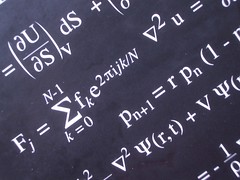Recently the journal New Negatives in Plant Science, was launched with the aim of publishing negative, unexpected or controversial results in the field plant biology this.
This journal is aimed at plant science, but I have always thought that some kind of journal in mathematics that presents results that are ‘close but no cigar’ could be useful; for example one could present results of things that at first look should work, but do not. (Everybody’s note book is full of such things!) However, no-one would want to publish results that are not correct. The only way I can see to turn this around is to develop ‘no-go theorems’.
By ‘no-go theorems’ I mean clear mathematical reason why something the community expected to work does not. Such theorems are usually to be found in theoretical physics, but they can appear in pure mathematics also.
Such concrete statements are of course published in standard journals. Examples that spring to my mind are the Weinberg–Witten theorem, Coleman–Mandula theorem and the no-cloning theorem. Plenty of other examples exist.
Link
Why Science Needs to Publish Negative Results
US mathematician John Nash was killed along side his wife in a taxi crash in New Jersey. Nash is best known for his work in game theory which lead him to be awarded the 1994 Nobel Prize for Economics. He is also more popularly known for the man who inspired the film ‘A Beautiful Mind’.
Nash battled with schizophrenia along side mathematics.
I know Nash’s work in differential geometry; his famous theorem states ‘every Riemannian manifold can be isometrically embedded into some Euclidean space’.
Our thoughts are with his friends and family.
Link
‘Beautiful Mind’ mathematician John Nash killed in crash
 |
I gave the final talk at the conference ‘Geometry of Jets and Fields‘ in honour of Prof. Grabowski. The reason was because I won the poster competition. As Prof. Grabowski had on the opening day discussed our applications in geometric mechanics, I discussed some more mathematical ideas around this. |
In particular I sketched our theory of weighted Lie algebroids and weighted Lie groupoids. Importantly, I gave our guiding principal which states that `compatibility with grading means the action of the homogeneity structure is a morphism in the category you are interested in’. For sure, so far that principal seems to be working.
You can find the slides here. You can also find these slides and others via the conference homepage.
I think, or I should say hope, that the talk was well received. It was an honour and a pleasure to give a talk at the conference in his honour.
 |
The poster that I presented in the conference ‘Geometry of Jets and Fields‘ in honour of Prof. Grabowski has won the competition. The prize is to give the closing talk! |
The poster is based on my joint paper with K. Grabowska and J. Grabowski entitled “Higher order mechanics on graded bundles” which appears as 2015 J. Phys. A: Math. Theor. 48 205203.
The basic rule that I followed is that ‘less is more’. I tried to only sketch the basic ideas and give the important example. I noticed that my poster is quite informal in the sense that I present no theorems or similar, I just sketch our application of graded bundles and weighted Lie algebroids to mechanics in the Lagrangian picture.
You can find the wining poster here.
Random thoughts on mathematics, physics and more…
